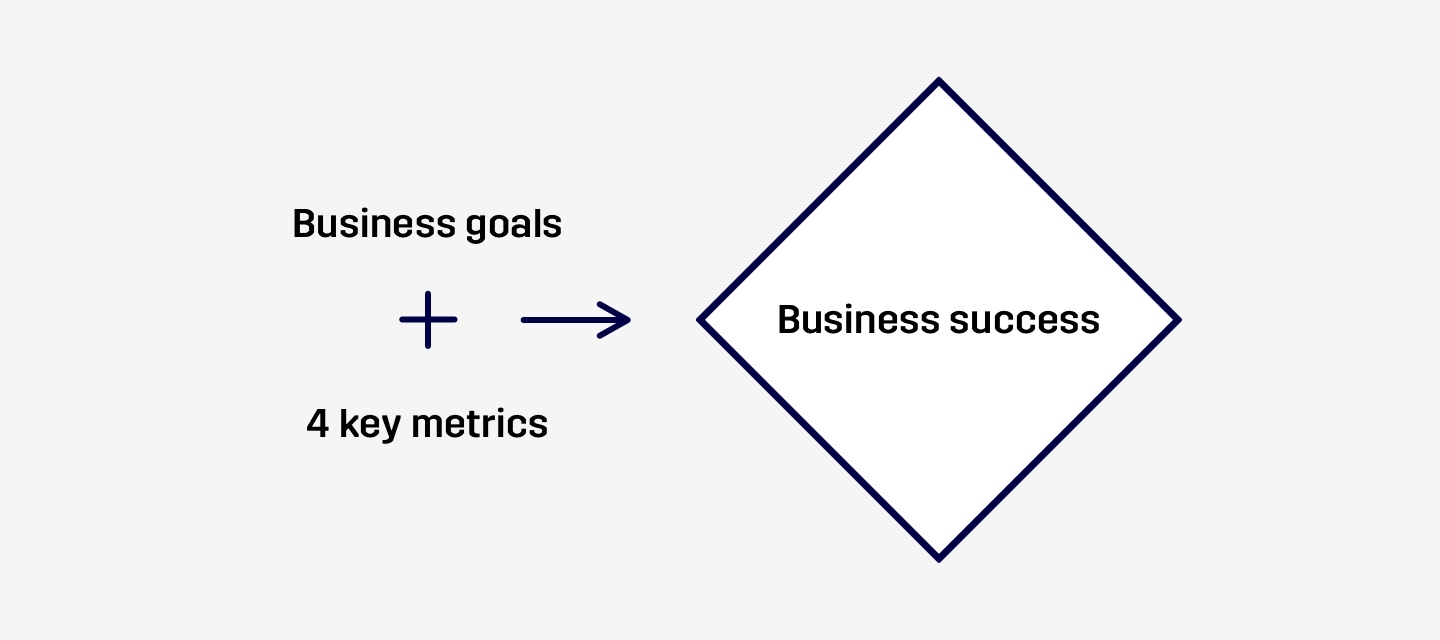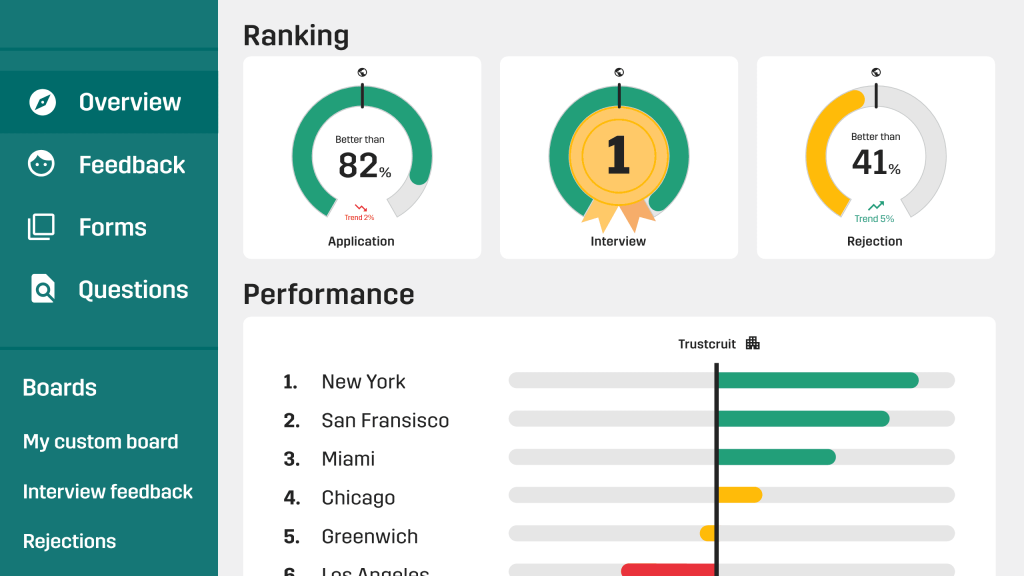
This is a case study of one of Trustcruit’s customers that have been measuring the candidate experience within their recruiting process for 2 years. They have data from thousands of candidates that are giving them insights about what areas they need to focus on to create a positive candidate experience. Like many other organizations, they are struggling with getting leaders and teams to make decisions by using candidate experience key metrics that measure the success of performances that have a positive impact on their business goals.
They have business goals and key metrics that measure success. But how can they implement candidate experience data that can be used to gain new insights and furthermore create new values that drive change and success? In other words, how can they make data-driven decisions to attain their business goals and reach success?
Key metrics for measuring business success:
- Employment rate
- Number of candidates presented
- Number of interviews
- Number of candidates applying
What is preventing them from making data-driven decisions?
Some team members and leaders in the company use the candidate experience data to measure their performance and improve the recruitment process. They are also aware of how important the candidate experience is but still does not have any common goals, candidate experience key metrics, routines or action plans that are fully implemented for leaders or team members. Why is this?
Problem 1 — No common routine for operational reporting of data
With different routines within the organization and different ways of handling candidates in the recruitment process, it is hard to secure that all candidates have received information on their status in the recruitment process. The result of candidates without status in their ATS is that not all candidates are communicated with and do not receive feedback forms in different stages. The feedback forms that convert into experience data that is systematically measured over time and brings data insights to the company. The difference between the number of feedback forms sent out to candidates in comparison to the number of candidates that actually go through their recruitment processes each year has given them valuable insights. By missing out on thousands of responses from candidates every month, the data collected is questioned and not seen as a mirror of an individual or team performance within the company. Experience data in real time, that we provide by hocking up to our customers ATS is only as good as the method used to work in the ATS.
Problem 2 — No common candidate experience long term goal with key metrics to measure success that has an impact on the overall business goal
To make data valuable, it is important to convert it into key metrics that can bring insights on how to reach common goals and the vision that inspires people to strive for greatness. Without the ability to do that, data has no value. In this case, the company has communicated that it is important to measure the candidate experience and strive to have a high Candidate net promoter score (CNPS). But there is no clear picture of what impact a “great” candidate experience can have on the ability to reach personal or business goals, and what key metrics that leaders and team members need to follow up on and use to measure success. This results in a fail of showing how the data can bring value and be used to make better strategic decisions.
Solution
New routines, key metrics, and following up on results
First step — Create a new routine for how everyone needs to work in the ATS and follow up results with key metrics for measuring the success of this project
The lack of a common routine for operational reporting of data is clearly shown in the data of this company. Over 34% (the average for all Trustcruit users that measure the candidate experience is 33%) of the candidates state that they have not received any feedback after not passing selections.
To solve this problem, the company will do the following:
- Communicate the new routine that all ATS users need to follow. All teams will receive a mail that clearly explains how they need to work.
- The team leaders are then responsible for following up on the progress and making sure that the new routines are used by all team members. They are also responsible for communicating the impact of not giving feedback to all candidates.
- They have contacted their ATS and gone through all triggers that make it possible to collect data so that it is clear to all involved. IT needs to be on top of the triggers used, especially when system changes are made. They also need to be able to guide team members that have questions.
By creating a new routine, the company will avoid a lack of communication with their candidates and gain more data. With more data the company gets control over how they are performing not only on an overall level but broken down to regions, business areas, teams, and individuals within the organization.
Second step — Vision, clean communication and common routines
An important part of creating a data-driven culture is to have leaders that inspire others to change the way they work and the “tools” they use to make better decisions.
This will be done by:
- Communicating a vision and strategy that is clean and easy to understand. A common goal to work towards.
- Setting up a board with key metrics that show why a data-driven team will be a stronger team. What is the impact of change? What are the benefits?
4 Key metrics that will be used to track this project are:
- The total amount of candidates that receive feedback forms after an interview and after rejection. This is compared to the “same status” candidates in the ATS.
- The number of candidates that state that they did not pass selections and have not received any feedback.
- The number of candidates that would apply again, after being rejected.
- Average CNPS (candidate net promoter score) after rejection.
Implementing these key metrics will make it possible for the organization to measure the result of the new routine and their goal to have more satisfied candidates after rejection. They are also used to make sure that the right processes are in place so that the data can be collected and used to measure performance, projects and the impact of changes made.
By combining the company goals with these 4 key metrics to measure results, they can measure the effect of their activities and thereby make data-driven decisions that affect their business success.

